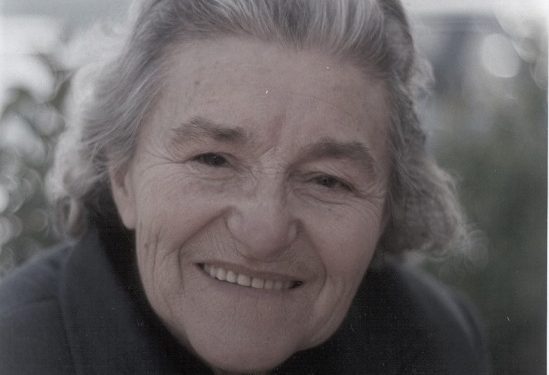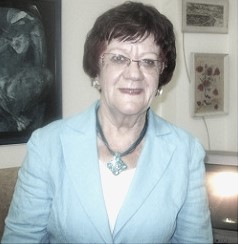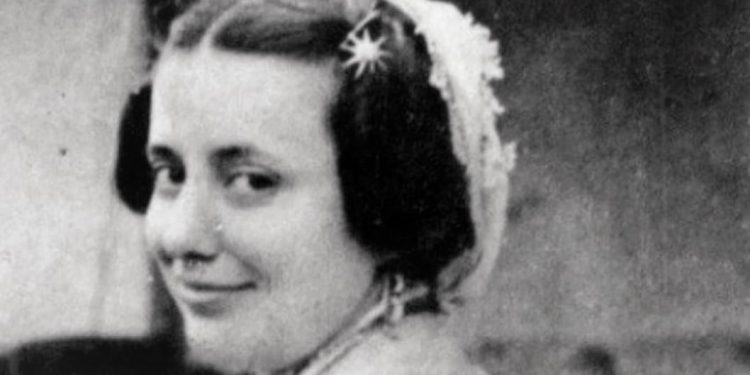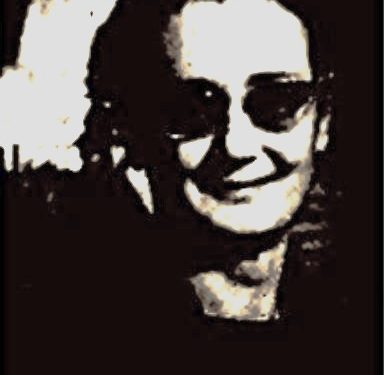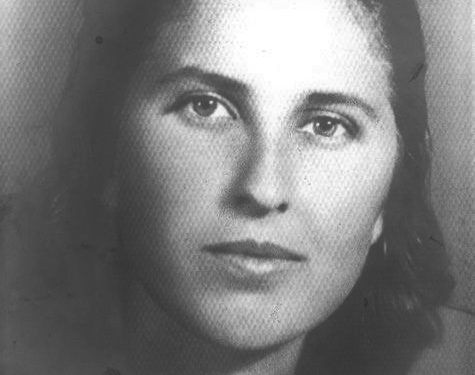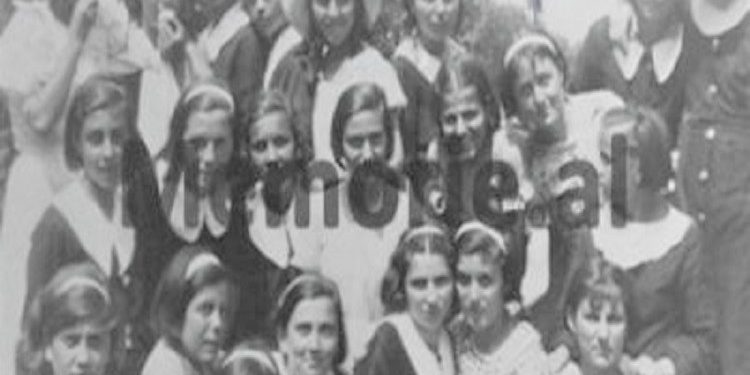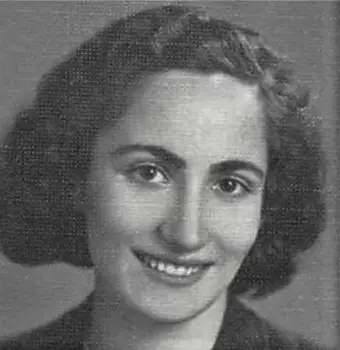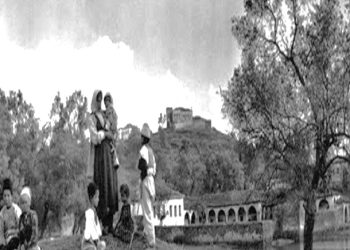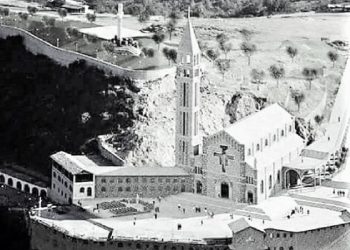By Aida Tuci
– “Musine Kokalari died on Friday, they didn’t bury him on Saturday, because one of the municipal workers didn’t want it, Sunday was a holiday. When Monday came, her body had been bitten by…! –
Memorie.al / “They all look so beautiful, in the photos of those black and white years. Their eyes shine with thirst for knowledge, for culture…! They were the girls of the “Nana Mbretnesë” Women’s Institute. Only that the fate for some of them would be terrible. They would roll over in the blackest hell of the communist dictatorship. They would suffer long years, in prisons and exiles. The most beautiful, the best of Albania”. This is what Meri Lalaj writes in her newest book, titled “Nana Mbretneşe Women’s Institute”. In November of this year, it will be 80 years since the opening of the Institute, where hundreds of girls were formed who played an important role in the emancipation of Albanian girls and women. “Among them, unfortunately, not a few, from 1945 to 1990, fell prey to communist repressions and many of these girls would see themselves with handcuffs, black scarves, blackened lives in prisons, exiles and persecutions. Only a few of these girls, whose husbands were at the head of the socialist state, survived the persecution”, says the author of the book, the writer Meri Lalaj.
She followed exactly this course of events in the book, bringing, among others, the fates of the beauties of the 30s and 40s. There were girls who read the classics, gave theater performances, published their own newspaper, wrote poems, learned to play the violin, the piano, rode the streets on bicycles and motorbikes, went out in kilos and played volleyball and basketball…but they also learned how to be ladies home, sew and cook.
Meri Lalaj’s book is the first attempt to reconstruct the history of this Institute. The author brings, through previously unknown archival documents, the history of the creation of this school, while through the memories and testimonies of some of the protagonists; she brings the sad story of those girls whom the black fate rolled into the black soil of the communist dictatorship. They were “the most beautiful, the best of Albania”.
Lalaj: Liri Belishova insisted on writing this book
“It didn’t even occur to me that one day I would sit down to write this book. While I was not in Albania, Mrs. Liri Belishova called me. When we met, she told me that Mrs. Vangjeli Mele had collected from the State Archives materials related to the “Nana Mbretneshë” Women’s Institute.
To be honest, I only heard about this Institute. (It was spoken under the breath, since it had the name ‘Nana Queen’ and Albania as a communist country; it had nothing to do with kings or queens.) I had also seen the film “Girls with red ribbons”, which is dedicated to this school. I don’t know what thought flashed through my head at that moment when I said: “Yes, I will write it”!
It was Liri Belishova who gave the idea to the author Meri Lalaj and insisted that a book be written for the ‘Nana Mbretneshë’ Women’s Institute. “With her clarity and wisdom, Liri Belishova explained to me many details of the events of the time, with memories of professors or contemporaries. The purpose of this book is to clarify the truths in the history of this Institute and Albanian life in the years we left behind”.
Meri Lalaj thought that the process of writing this book would be just for those beautiful, wise girls who studied at that Institute, without even having the slightest idea of what hard work awaited her, to collect materials and evidence for the truths (he emphasizes this often throughout the conversation about the book), of the lives of many of the former beauties of Tirana, who were persecuted by the communist system. “I didn’t know how many people I had to talk to, how many books, newspapers and other materials I had to browse and how many photos I would collect.
Every day I lived with their school years, with their efforts and selflessness in the fight for the liberation of the country, with their ideals, with their beautiful dreams for the future. Sometimes I felt imprisoned, like Didi Biçaku or Gjyslyme Dervishi, I lived the long years of isolation of Musine Kokalari, experienced the peak of my career and sinking with thirty years of exile like Liri Belishova, I rejoiced at the happy fate of Nermin Vlora and Vera Blloshmi . Ramizeja (Gjebrea) followed me everywhere…!
After reading an article in the newspaper, I wanted to go to Durrës, to meet Mrs. Drita Malile, when they told me: “Drita has been gone for seven or eight days…”! I asked to talk to Mrs. Shpresa Qeribashi (Bushati), I met her son, who told me that his mother could not speak, because of a thrombosis that happened to her on January 1.
While walking along the road, I noticed a death notice in which the name Zaira Mati was written. With Mrs. Zaira, I had the chance to sit down on one of the 15th of the month, as the girls of this school usually gathered, and we talked about the book she had translated.
One day I met with Mrs. Dhurata Strazimiri (Jegeni) and we talked at length, and when I called to clarify something, my daughter came out telling me that her mother had suffered a cerebral stroke and was completely paralyzed. Mrs. Viktori Gjikondi, with her wonderful memory, always stood by me, answering every question I asked her. Vangjeli Mele, also as a witness to the events of those years and the hard work he did in collecting material from the State Archives and from other sources.
Afërdita Tutulani handed me a photo where Margarita, her sister, appeared with several girls, telling me: “This photo is without tan, as we had the negative in the family…”! There are many testimonies that come in this book, about the girls of the Institute: Ballkëz Halili, Didi Biçaku, Drita Kosturi, Drita Pelinku, Fiqiret Sanxhaktari (wife of Mehmet Shehu), Liri Gega, Liri Belishova, Musine Kokalari, Nermin Vlora, Ramize Gjebrea and , many, many more.
But for the author Meri Lalaj, this book remains open to be continued and completed with other books and other stories not yet told. “I would like this book to have more complete information about Karl Gurakuqi, Arshi Pipa and others, but despite all my efforts, I couldn’t do it. This is what happened with Hysni Babameto and other professors, for whom I could not find information”.
The former students of the “Nana Mbretneshë” Women’s Institute, who gave life to those years, are now very old; some of them have fled this life, taking with them the memories and relics of their youth. Those who are left, continue to follow the monthly ritual of meetings every 15th of the month, at “Taiwani”. They tell their stories and remember the friends of the Institute. Drita Kustur’s letter to the friend of the “Nana Mbretneshë” Women’s Institute, Ganimet Gjilani and fragments of stories from the stories in the book dedicated to the girls who studied at this school
Drita Kosturi: “Ganimet, I apologize for bringing communism”!
One of the friends of Drita Kosturi Institute was Ganimet Gjilani (Fratari), who came from Kosovo. Both girls were among the many that were condemned by fate to suffer the communist regime. After the 90s, Ganimet Gjilani invites all the friends of the Institute for lunch, but one of them, Drita Kosturi, receives a letter of apology: “Dear Ganimet…, me and many school friends, we Communism took my mind… but believe me, before I try these good dishes, give me a good wood…!
Yes, give me a piece of wood, because I also said it in a meeting with the persecuted, since communism… which destroyed you and thousands of others like you and your family for fifty years in a row… I brought this communism to them and many others like me, and many of our friends from the “Nana Mbretneşe” Institute…! However, I also suffered the communist hell like you…! Now I find the strength to ask for forgiveness” and burst into tears. This was the sad fate of two of the Institute’s girls, which is witnessed in this book by Ganimete’s daughter, Sabire Halili.
Didi Bicaku: How did I escape the shooting, for the bomb in the Soviet Embassy?!
Hadije (Didi) Biçaku together with her older sister, Semijë Biçaku, were both students at the “Nana Mbretneşe” Women’s Institute. Didi was also involved in sports, playing volleyball and basketball and training by skating on the streets of Tirana. On February 23, 1951, she was arrested by three State Security soldiers. He is accused of the bomb in the Soviet Embassy. Didi Biçaaku (Maliqi) escaped being shot for the bomb at the Soviet Embassy, but not her friend, Sabiha Kasimati. Didi was the last witness who saw Sabiha alive.
Didi confesses in this book: “A car noise was heard. The door was opened and the prisoners were being put into the car, at the end it was me and Sabiha. She got on, when I was about to get on, while I had thrown one leg, one of the guards pushed me and broke my handcuffs. Sabihaja was talking to me to look. I was crying because they are releasing them and I was crying because I wanted to go with them. The guard who was leading me to the dungeon said: “What about you, you wanted to go to Ura e Beshiri”?! They put me in the big dungeon. For two days I didn’t put bread in my mouth, I just cried through tears, weaving verses in my mind for my mother, my sister, my little niece…! My sister was told at the prison gate that I had been shot. After three or four days, they isolated me.
When I was alone in my cell, I was not afraid of what might happen to me, but rather of the cockroaches, scorpions, and large rats that came about in the dungeon. They took me out of the cell and took me to the investigator, to the “House with leaves”. They kept me in prison for 5 months.” After that, Didi Biçaku no longer worked in education, a profession for which she had completed the Institute, after leaving prison; she worked as a seamstress and later in construction. Now she is 86 years old and for tens of years she kept the incident within herself, how she escaped from the shooting, she did not dare to confess it. He didn’t want to remember the past.
Musine Kokalari and the confession of the Rrëshen doctor
Quite by chance, the author of the book, Meri Lalaj, knows the doctor who stayed by Musina Kokalari, during the terrible days of the illness that took her life. Today, Meri feels very sorry, that she cannot remember the last name of the doctor, she even hopes that she will come alive, if only to give her some photos, which Meri Lalaj keeps as a memory, from the day they met.
But in this book, the author brings the conversation she had with the doctor named Marta, about the last days of Musine Kokalari’s life. “As Doctor Marta, who worked in Rrëshen, told me, Musineja died on Friday, they didn’t bury her on Saturday, because one of the municipal workers didn’t want to, Sunday was a holiday. When Monday came, her body had been bitten by the rats that came around.”
The most beautiful of the beautiful, Ramize Gjebrea
“I close my eyes and in my imagination, Ramize Gjebrea appears, sitting on a bench, there in the corner of the dormitory yard, knitting sweaters with spears…with that yellow hair, blue eyes and sweet face…she looked like an angel” , – this is how Ballkëz Halili remembers her friend from the Institute, Ramize Gjebrean, described as the most beautiful among the beautiful. Ramize Gjebrea was sentenced to be shot. The firing squad was deliberately chosen to be all-girl. School friends shot Ramize’s body with seven bullets. One of the bullets killed him just because he sang a love song.
Liri Belishova: My teacher, Liri Gega
“My teacher, Liri Gega, put me on the path to becoming a communist,” Liri Belishova recalls. Liri Gega embraced the communist movement as early as 1940 when she was a student in Rome. She was arrested in the act, while she was in a meeting with the secretary of the Embassy of the Soviet Union, who was responsible for the secret discovery in Albania. Mustafa Kruja saved her from prison: “Take your daughter, but she is now infected with the Bolshevik germ”, Mustafa Kruja would say to Liria’s father, Beso Gegë.
But even this early communist, a former student of the Institute, would not escape persecution. In Tirana prison, Lirina was locked up in cell number 18, which was dark all the time, without windows and full of big rats. Land with husband Dali Ndreu was executed. It is said that their dead bodies were dug up somewhere in a village of Korça and set on fire”, Agim Musta testifies. Memorie.al




